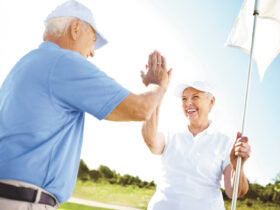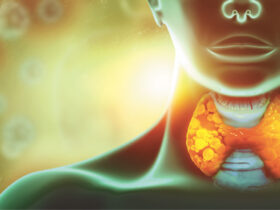By Cheung Teav, Physical Therapist with Pinnacle Physical Therapy –
 The rotator cuff is made up of four major muscles and their tendons which connect the upper arm bone (humerus) to the shoulder blade (scapula). They also help hold the ball of the upper arm bone firmly in the shoulder socket, providing ROM and stability.
The rotator cuff is made up of four major muscles and their tendons which connect the upper arm bone (humerus) to the shoulder blade (scapula). They also help hold the ball of the upper arm bone firmly in the shoulder socket, providing ROM and stability.
Injuries to the rotator cuff are very common, with the rotator cuff becoming inflamed or irritated due to heavy lifting, repetitive arm movements or a fall. Left untreated, this injury can cause dysfunction with severe pain and may result in surgery and extensive physical therapy.
Common Causes of Rotator Cuff Injuries
- Normal Wear and Tear – Increasingly after the age of 40, normal wear and tear on your rotator cuff can cause a breakdown of fibrous protein (collagen) in the tendons and muscles. This makes them more prone to injury and degeneration. With age, you may also develop calcium deposits within the cuff or arthritic bone spurs that can pinch or irritate your rotator cuff.
- Poor Posture – If you slouch your neck and shoulders forward, the space where the rotator cuff muscles reside can become smaller. This can allow a muscle or tendon to become pinched under your shoulder bones (including your collarbone), especially during overhead activities, such as throwing.
- Falling – Using your arm to break a fall or falling on your arm can bruise or tear a rotator cuff tendon or muscle.
- Lifting or Pulling – Lifting an object that’s too heavy or doing so improperly, especially overhead, can strain or tear your tendons or muscles. Likewise, pulling something may cause an injury.
- Repetitive Stress – Repetitive overhead movement of your arms can stress your rotator cuff muscles and tendons, causing inflammation and eventually tearing. This occurs often in athletes, especially baseball pitchers, swimmers and tennis players. It’s also common among people in building trades, such as painters and carpenters.
Rotator Cuff Tears Can Cause:
- Pain over the top of the shoulder or down the outside of the arm
- Shoulder weakness
- Loss of shoulder motion
The injured arm often feels heavy, weak, and painful. In severe cases, tears may keep you from doing your daily activities or even raising your arm. People with rotator cuff tears often are unable to lift the arm to reach high shelves, reach behind their backs to tuck in a shirt, pull out a wallet or fasten a bra.
How Does Physical Therapy Help Rotator Cuff Tears?
The goal of physical therapy is to improve the function of the muscles that surround the shoulder. Most people only strengthen a few of the large muscles around the shoulder. Physical therapy targets the smaller, but important muscles around the shoulder that are commonly neglected. By strengthening these muscles, therapy can help compensate for damaged tendons and improve the mechanics of the shoulder joint. A trained physical therapist can review your health history, perform a thorough examination, and conduct a series of tests designed specifically to help pinpoint the cause of your shoulder pain.
Specialized Tests
Physical therapists perform specialized tests, such as the Hawkins-Kennedy impingement test, Neer’s impingement sign, Empty can test, and various other tests to diagnose an impingement or a tear or other pathology in the shoulder. Your therapist may raise your arm, move your arm out to the side, or raise your arm and ask you to resist a force, all at specific angles of elevation. These tests may cause you to feel some temporary discomfort, which is a normal and part of what helps the therapist identify the exact source of your problem. In some cases, the results of these tests might indicate the need for a referral to an orthopedist or for imaging tests.
Physical Therapy Post-Surgery
The vast majority of patients who have a small rotator cuff tear will not need surgical treatment. Determining when surgery is needed for a rotator cuff tear depends on a number of factors you can discuss with your doctor.
If you need surgery to restore use of your shoulder or decrease painful symptoms, physical therapy after shoulder surgery is essential to restore your shoulder’s function and aid in the recovery process. Your physical therapist will design a treatment program based on both the findings of the evaluation and your personal goals. He or she will guide you through your post-surgical rehabilitation, which will progress from gentle range-of-motion and strengthening exercises and ultimately to activity- or sport-specific exercises.
Your treatment program most likely will include a combination of exercises to strengthen the rotator cuff and other muscles that support the shoulder joint primarily the scapular stabilizers. Your therapist will instruct you in how to use therapeutic resistance bands. The timeline for your recovery will vary depending on the surgical procedure and your general state of health, but full return to sports, heavy lifting, and other strenuous activities might not begin until four months after surgery. Your shoulder will be very susceptible to reinjury, so it is extremely important to follow the postoperative instructions provided by your surgeon and physical therapist.
Tips to Care for a Rotator Cuff Injury
A minor injury often heals on its own, with proper care. If you think you’ve injured your rotator cuff, try these steps:
- Rest Your Shoulder – Stop doing what caused the pain and try to avoid painful movements. Limit heavy lifting or overhead activity until your shoulder pain subsides.
- Apply Ice and Heat – Putting ice on your shoulder helps reduce inflammation and pain. Use a cold pack, a bag of frozen vegetables or a towel filled with ice cubes for 15 to 20 minutes at a time. Do this every couple of hours the first day or two. After about two or three days, when the pain and inflammation have improved, hot packs or a heating pad may help relax tightened and sore muscles.
- Take Pain Relievers – Over-the-counter (OTC) nonsteroidal anti-inflammatory drugs (NSAIDs), such as aspirin, ibuprofen (Advil, Motrin, others) or naproxen (Aleve), may help reduce pain. Acetaminophen (Tylenol, others) also may help relieve pain. Follow label directions and stop taking the drugs when the pain improves.
- Keep Your Muscles Limber – Try to do some gentle range-of-motion exercises in a pain-free range to keep your shoulder muscles limber. Total inactivity can cause stiff joints. In addition, favoring your shoulder for a long period of time can lead to frozen shoulder, a condition in which your shoulder becomes so stiff you can barely move it. Once your injury heals and you have good range of motion in your shoulder, continue exercising. Daily shoulder stretches and a balanced shoulder-strengthening program can help prevent a recurrence of your injury.
Custom Physical Therapy Programs
At Pinnacle Medical Group Therapy and Wellness Center, our physical therapists work closely with your primary care provider or medical specialists. Your physical therapy program is based on our integrated team-approach to quality medical care, designed to restore mobility, reduce pain, and increase fitness levels. Our team of credentialed physical therapists and physical therapist assistants evaluate and treat various diagnoses to improve and enhance function. Their advanced training ensures proper evaluation and quality of treatment customized to each patient’s specific needs.
To learn more or to schedule an appointment with Cheung Teav, Physical Therapist with Pinnacle Physical Therapy, please call 941-748-8383 or visit us online at www.pmgpa.com.
Call To Schedule Your Appointment Today!
941-748-8383
4110 Manatee Avenue West
Bradenton, FL 34205







